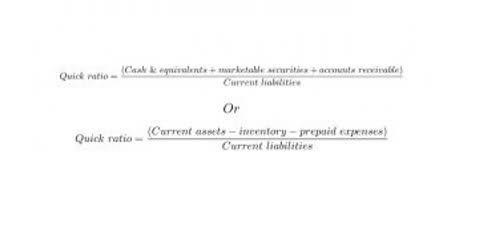It has many uses such as allowing a business to evaluate its credit policies, helping in decision-making process, being an indicator of performance of the credit control department of the business, etc. It might also have some limitations when used on its own and must used as a comparison tool to produce useful results. The average collection period (ACP) is a key metric used to measure the efficiency of a company’s credit and collection process. It represents the average number of days it takes for a company to collect its accounts receivable from the date of sale.
Accounts Receivable (AR) Turnover
However, the account receivable balance at the end of the period may be unusually high or low depending on when the most recent seasonal sales took place. This may result in abnormally high or low account receivable collection periods. The average collection period is the timea company’s receivables can be converted to cash. It refers to how quickly the customers who bought goods on credit can pay back the supplier. The earlier the supplier gets the funds, the better it is for business because this fund is a huge source of liquidity.
- To calculate the account receivable collection period, the following formula must be used.
- A company that collects receivables faster than its peers demonstrates effective credit control, enhancing its appeal to investors.
- It is apparent from the results of both companies that XYZ Co. has performed better in collecting its account receivable balances as compared to ABC Co.
- “So, all of that money goes out first, and eventually—possibly months later—the company will issue an invoice,” says Blackwood.
Streamline invoicing and payment processes
You need to calculate the average accounts receivable and find out the accounts receivables turnover ratio. An increase in the receivables collection period can be a cause for concern, as it suggests potential issues in the cash flow cycle. For instance, a company may experience a higher number of customers with delayed payment patterns, indicating potential credit risks. Additionally, changes in economic conditions or industry dynamics can impact customer payment behaviour, leading to extended collection periods. By tracking this period, businesses can assess their ability to convert credit sales into cash and manage their cash flow effectively. Analysing and managing the receivables collection period is essential for maintaining a healthy financial position and optimising cash flow.
Suppose Tasty Bites Catering has an average collection period of 30 days, while Delicious Delights Catering has an average collection period of 45 days. Such a company’s cash conversion cycle begins with the first phone call and ends when the client pays the final invoice. “So, all of that money goes out first, and eventually—possibly months later—the company will issue an invoice,” says Blackwood. The collection period is the time between when the invoice goes out and when payment arrives.
This means that the company is able to quickly convert its sales into cash, which can improve its financial health and liquidity. Likewise, the account receivable collection period can also be compared to its historical data of the same business to see how it has changed over time. This can be useful to determine the effects of any changes in the policies of the business on its ability to collect its account receivable balances. Moreover, the account receivable collection period of the business can also be checked against its competitors, other businesses in the same industry or the industry average as a whole. The account receivable collection period of a business allows the business to evaluate its credit limits and policies. By calculating the receivable collection period, a business can determine how much time it takes for the business to recover its receivable balances.
But the reality is that because of their influence on your cash flow, collection periods are integral to all aspects of your business. By calculating it, you can determine whether it’s time to reconsider your payment terms, your credit policies or with whom you do business. Let’s say that Company ABC recorded a yearly accounts receivable balance of $25,000. As demonstrated in the example above, the account receivable collection period on its own does not mean anything. For example, in the above example, the account receivable collection period is compared with the credit period allowed to the customers.
Identifying these issues and resolving them can lower the number of days in your company’s average collection period, and will display how effectively your accounts receivable department is performing. The accounts receivable collection period may be affected by several issues, such as changes in customer behaviour or problems with invoicing. This difference likely stems from their dependence on physical inventory, creating a need for faster payments after each transaction. These companies can also enforce timely payments more effectively by controlling credit exposure, as customers cannot receive additional inventory until previous invoices are paid. This is in stark contrast to sectors like Office & Facilities Management, where the inability to “remove” clients from services due to non-payment makes enforcing prompt collections more challenging. Second, the company needs cash not only to pay suppliers for the services or products that it purchases for running its operations but also to pay for its employees.
When there is a level of uncertainty in the economy, it’s important to protect your business by collecting your accounts receivable quickly. You may need to use a line of credit to pursue these opportunities, which means more interest to pay. If you don’t know how long it’s taking to collect your accounts receivables, it’s probably taking too long. In 2020, the company’s ending accounts receivable (A/R) balance was $20k, which grew to $24k in the subsequent year. Our platform automates reminders as well as internal or external escalations, and other collections actions, streamlining your collections process.
How to improve your average collection period
Since the company needs to decide how much credit term it should provide, it needs to know its collection period. For example, the banking sector relies heavily on receivables because of the loans and mortgages that it offers to consumers. As it relies on income generated from these products, banks must have a short turnaround time for receivables. If they have lax collection procedures and policies in place, then income would drop, causing financial harm. However, it has many different uses and communicates several pieces of information.
However, an ongoing evaluation of the outstanding collection period directly affects the organization’s cash flows. An average collection period (ACP) of 30 days indicates that, on average, it takes a company 30 days to collect its accounts receivable from the date of the invoice. A shorter ACP is generally considered to be more favorable for a company, as it means that cash is flowing into the business more quickly. The ACP value indicates the average number of days it takes a company to collect its receivables. A lower ACP is generally preferable, as it suggests that the company is efficient in collecting its dues and has a shorter cash conversion cycle. By understanding the accounts receivable collection period, businesses can identify any issues that may lead to cash flow problems and take steps to address them.
- To calculate the account receivable collection period, the average account receivable balance must be calculated first.
- Likewise, the account receivable collection period can also be compared to its historical data of the same business to see how it has changed over time.
- Efficient cash flow management is important for any business’s financial stability and growth.
- Taking a long time to collect payments essentially means you have less money in the bank—which brings with it an assortment of implications.
- For example, the credit control of the business calls their customers every day and threaten with legal action in case of failure to repay their balance within time.
Trade Receivables Collection Period: Importance and Management
The Average Collection Period represents the number of days that a company needs to collect cash payments from customers that paid on credit. Knowing the average collection period for receivables is very useful for any company. By analysing the collection period-related figures, businesses can identify areas for improvement and take corrective action to ensure a healthy financial position. Furthermore, proactive and consistent communication with customers can significantly impact the collection period. Sending timely and accurate invoices, offering incentives or implementing penalties for late payment, along with regular reminders and follow-ups, can encourage prompt payment. The average collection period figure is also important from a timing perspective to help a company prepare an effective plan for covering costs and scheduling potential expenditures to further growth.
Once we know the accounts receivable turnover ratio, we can do the average collection period ratio. It implies that a business is able to collect payments from customers quickly, converting credit sales into cash promptly. It can set stricter credit terms that limit the number of days an invoice is allowed to be outstanding. This may also include limiting the trade receivables collection period formula number of clients it offers credit to in an effort to increase cash sales.
This can impact a company’s liquidity and ability to meet its short-term obligations. A shorter collection period generally indicates that the company collects payments efficiently, contributing to a steady cash flow. A longer period may highlight inefficiencies or lenient credit terms, and could signal that the company should tighten its credit terms or improve its collections processes to ensure better liquidity. However, lower account receivable collection periods may also indicate aggressive credit control behaviors. For example, the credit control of the business calls their customers every day and threaten with legal action in case of failure to repay their balance within time. Businesses should ensure that it is kept at an optimal level while ensuring the satisfaction of the customers.
A company’s average collection period is indicative of the effectiveness of its AR management practices. Businesses must be able to manage their average collection period to operate smoothly. The average collection period is an indicator of the effectiveness of a firm’s AR management practices and is an important metric for companies that rely heavily on receivables for their cash flows.
A longer ACP may indicate that the company is facing difficulties in collecting its receivables, which can lead to cash flow problems and affect its financial health. If the accounts receivable collection period is more extended than expected, this could indicate that customers don’t pay on time. It’s a good idea to review your balance sheet and credit terms to improve collection efforts. The main source of cash generation for any business is through the sales it makes.
Helps to identify and address any payment problems quickly
This comparison is used to evaluate how long customers are taking to pay the seller. A low figure is considered best, since it means that a business is locking up less of its funds in accounts receivable, and so can use the funds for other purposes. Also, when receivables remain unpaid for a reduced period of time, there is less risk of payment default by customers. Moreover, the account receivable collection period is used in working capital management of a business. For example, the account receivable collection period of a business can be used in the calculation of its cash operating cycle.
What is the formula of accounts receivable turnover ratio?
First, long outstanding accounts receivable could potentially lead to bad debt and the effect is more adverse than the risk of late collection. That’s different from a situation where clients procrastinate on payments because their finances are in poor shape. Some customers who take longer than average to pay may have other merits, such as creditworthiness. If the average A/R balances were used instead, we would require more historical data.





